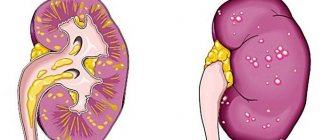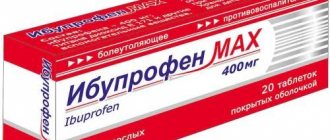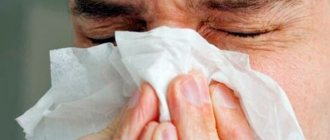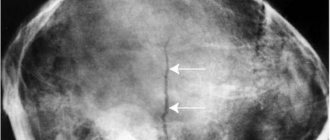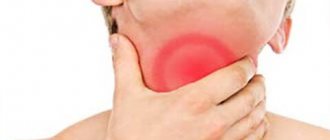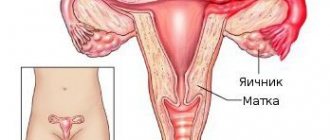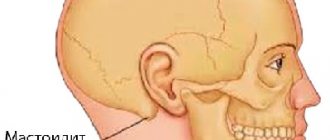Atrophic pharyngitis and methods of its treatment
Pharyngitis is an inflammatory process of the lymphoid tissue and mucous membrane of the throat and larynx. The main cause of the development of this disease is inhalation of air that is too hot, too cold or polluted, as well as exposure to various chemical irritants on the respiratory system. If the treatment of the disease is not given due attention, it will return again and again and will soon become chronic.
Atrophic pharyngitis, a photo of which can be seen below, is the last stage of the chronic form of pharyngitis and is practically untreatable:
Its long course ends with progressive sclerosis of the mucous membrane, submucosal layer, glandular, and lymphoid apparatus.
The main symptoms of atrophic pharyngitis
The main symptoms of atrophic pharyngitis are as follows:
- the mucous membrane of the pharynx on the back wall turns pale, becomes dry, begins to shine and it seems that it is covered with a layer of glossy varnish;
- convoluted and very thin blood vessels are clearly visible through the mucous membrane;
- lymphoid granules are formed by highly hypertrophied connective tissue;
- pharyngeal reflexes are significantly reduced or absent altogether.
The patient’s complete absence of pharyngeal reflexes indicates that the atrophic process has affected the trophic nerve endings.
The presence of the last symptom of chronic atrophic pharyngitis makes it almost impossible to achieve a reparative effect in the treatment of this form of pharyngitis.
How to recognize chronic laryngitis
Symptoms of chronic laryngitis in adults and pediatric patients almost always determine the localization of the pathological process, however, to make an accurate diagnosis, consultation with an otolaryngologist is necessary. The doctor conducts an examination, which includes:
- general examination;
- collecting anamnesis, clarifying when the first symptoms appeared, how they changed over time, what treatment the patient received previously;
- determining the presence of factors that provoke the development of inflammation of the larynx;
- laryngoscopy - examination of the mucous membrane;
- if necessary, a biopsy of outgrowths on hypertrophied vocal folds, CT or MRI of the head and neck.
In cases where examination data suggests the presence of a neoplasm, the patient is referred to an oncologist.
How to cure pharyngitis in atrophic form
When an inflammatory process such as pharyngitis has grown to a chronic form, there is no need to talk about rapid elimination of the main symptoms of the disease and complete recovery. Treatment of atrophic pharyngitis is a long process that requires patience and diligence. The success of the treatment process largely depends on the degree of atrophy of the laryngeal tissues, the reasons that caused the development of the disease and the general state of the immune system and the body as a whole. How to cure atrophic pharyngitis and avoid relapse?
Before starting to treat the symptoms of atrophic pharyngitis, it is necessary to assess the composition of the blood, the functional state of the urinary system and digestive organs, study the viability of the endocrine organs, as well as the characteristics of the patient’s living and working conditions.
Treatment of chronic atrophic pharyngitis can be general and local. The purpose of using topical medications (solutions for rinsing and lubricating the pharynx) is to increase the activity of the glandular apparatus of the pharyngeal mucosa, without which it is impossible to increase the amount of mucus produced, reduce its thickness and viscosity, as well as increase the concentration of biologically active substances in it.
In order for local treatment of chronic atrophic pharyngitis to be effective, before each use of drugs it is necessary to clean the surface of the pharynx from accumulated mucus and crusts. Products with proteolytic enzymes will help in this matter. In addition, alkaline solutions for gargling have proven themselves to be excellent.
What happens in the larynx during laryngitis
The exact translation of the term “laryngitis” means an inflammatory disease of the larynx. In this case, the mucous membrane is the first to change, because it is the one that comes into contact with substances and microorganisms coming from outside. But the underlying layers are also involved in pathological reactions.
Laryngitis can be acute or chronic. They differ not only in terms of development, but also in the processes that occur, which is manifested by different symptoms.
The acute form of the disease most often occurs with a predominance of edema. In chronic disease, swelling also occurs, but changes in the structure of the laryngeal wall and circulatory disorders in it predominate.
The atrophic process develops over a long period of time. These are deep and irreversible changes that lead to thinning of the layers and disruption of the tissue structure. The mucous membrane, vein walls and glands change.
Initially, inflammatory infiltration appears in the outer layers of the laryngeal wall. The tissues gradually become denser and are replaced by connective tissue fibers.
The number of glands decreases, and the quality of the mucus they produce changes.
Since some vessels stop functioning, the saturation of tissues with oxygen and nutrients deteriorates. This supports ongoing processes.
The formation of connective tissue makes atrophy irreversible. The changes that occur determine the symptoms of laryngitis.
Inhalations for atrophic pharyngitis and disease prevention
Treatment with pharmaceutical products can be supplemented with traditional methods, the action of which is aimed at alleviating symptoms.
An excellent remedy is tea with mint and coltsfoot, plantain and chamomile, and instead of sugar you need to add natural honey. Inhalations for atrophic pharyngitis with Fluimucil and Berotek, which help thin the sputum, give good results. No less useful are inhalations with medicinal herbs such as sage, linden and calendula flowers. In the atrophic form of the disease, inhalations with oils, namely olive, menthol, peach and rose oils, help well.
Prevention of the atrophic form of pharyngitis consists of high-quality and timely sanitation of the throat and upper respiratory tract, effective treatment of previous colds and the elimination of household irritants.
If you have questions for your doctor, please ask them on the consultation page. To do this, click on the button:
Diagnostics
Diagnosis is based on a comparison of anamnestic information and physical examination data, laboratory and instrumental research methods. When interviewing a patient, the otolaryngologist focuses on the sequence of symptoms, previous diseases of the upper respiratory tract, and the presence of other predisposing factors. Further, for the purpose of a comprehensive examination of the patient, the following is carried out:
- Indirect laryngoscopy. An objective examination of the larynx reveals its moderate expansion, dryness, thinning and pathological shine of the mucous membranes. The mucous membranes often become dull red, and blood vessels are visible through them. On the surface of hyperemic and atrophied vocal folds there are dry crusts of a yellowish or brown color, which, when rejected, leave areas of hemorrhage.
- Laboratory tests. A general blood test reveals a slight increase in the level of leukocytes with a shift in the leukocyte formula to the left, and an increase in ESR. Against the background of allergic pathologies, eosinophilia occurs. To reliably verify the form of laryngitis, pathological examination of samples of the laryngeal mucosa can be performed.
- Hardware diagnostic methods. If it is impossible to carry out a full differential diagnosis, a contrast-enhanced CT scan of the neck is used, which allows one to visualize damage to regional vessels and exclude the presence of tumor formations and foreign bodies. For a detailed study of all regional structures, MRI of the soft tissues of the neck is indicated.
Differential diagnosis is carried out with neoplasms, foreign bodies, primary laryngeal oesophagus. A benign or malignant tumor is indicated by the severity of symptoms on one side, the presence of a dense formation based on the results of palpation of the neck, radiography, MRI and CT. When a foreign body enters, symptoms appear suddenly, accompanied by a feeling of shortness of breath or stridor. In such cases, an x-ray reveals an object located on the vocal folds. When the larynx is ozen, a specific foul odor is detected in the patient’s breath, and the severity of subjective symptoms depends little on environmental conditions.
Chronic atrophic pharyngitis: symptoms, causes and treatment
There are many forms of pharyngitis, but the most severe, and as it is also called extreme, is the atrophic form. The name speaks for itself - as the disease progresses, tissue atrophy develops, namely the pharyngeal mucosa. This leads to a gradual loss of the mucous membrane's functions. Atrophic pharyngitis is a chronic disease that requires long-term treatment, which is not always successful. How to cure atrophic pharyngitis and prevent its re-development?
Treatment
For effective treatment it is necessary:
- Eliminate the influence on the body of harmful factors that exist in the workplace - dust and gas pollution;
- Eliminate alcohol consumption and smoking;
- Eliminate diseases of the nose and sinuses that provoke the occurrence of the disease.
For atrophic laryngitis, symptomatic treatment is prescribed, which includes: various types of inhalations, including oil inhalations and herbal infusions; injections of biostimulants such as aloe, humisol, vitreous; laser therapy.
What is the difference between atopic pharyngitis and subatrophic
Chronic pharyngitis is distinguished by the degree of pathological changes that have occurred on the mucous membrane; the following forms of chronic pharyngitis are distinguished:
- catarrhal or simple;
- subatrophic or atrophic;
- hypertrophic or granulosa;
- mixed – signs of types 2 and 3 of the disease are present.
There is no difference between atrophic pharyngitis and subatrophic one, it’s just a matter of terminology. But the differences between the atrophic form of the disease and the granulosa form are significant.
"Inhalipt"
This drug has been used for the treatment of chronic pharyngitis in adults for more than 4 decades. “Ingalipt” is considered one of the first Russian-made products that was released in the form of a spray. Thanks to the multi-component formula (streptocide, sulfathiazole, thymol, eucalyptus and peppermint oils), the product provides a disinfectant and disinfectant effect. The inflamed mucous membrane is treated three to four times a day. The following sprays are considered similar in composition: “Novoingalipt”, “Ingalipt-N”.
What is the difference between atrophic pharyngitis and granulosa and the causes of the disease
How does granulosa pharyngitis differ from atrophic pharyngitis? The main difference between the granulosa form of the disease is the excessive growth of the affected tissues of the throat, while in the atrophic form they, on the contrary, dry out and become thinner. With hypertrophic pharyngitis, granules appear on the walls of the pharynx - red nodules that irritate the trigeminal nerve. This irritation provokes a dry cough and other unpleasant symptoms of the disease.
Atrophic pharyngitis, photos of which are given below, can be considered the last stage of the chronic form of this disease:
However, in some cases, the disease can be independent, occurring against the background of the general health of the pharynx.
Among the extensive list of reasons that can cause the development of this form of the disease, the most common are:
- metabolic disease;
- sinusitis, sinusitis, and rhinitis;
- dental caries
- smoking and alcohol abuse;
- improper or untimely treatment of acute pharyngitis;
- intestinal dysbiosis and chronic gastritis;
- pancreatitis and cholecystitis;
- diseases of the genitourinary system.
Too much uncontrolled use of vasoconstrictor drops can also cause the development of this type of disease.
If the symptoms of chronic atrophic pharyngitis appear due to the presence of another disease, treatment begins with identifying the cause of development and its prompt elimination.
Signs of chronic atrophic pharyngitis
Unlike acute pharyngitis, the atrophic form of the disease occurs without an increase in body temperature.
The subjective sensations experienced by the patient with this form of the disease are no different from the signs of other forms of this disease. Typical symptoms of atrophic pharyngitis are:
- tickling and sore throat;
- dryness in the mouth and throat;
- sensation of the presence of a foreign body or lump in the throat, making it difficult to swallow;
- constant desire to cough;
- sometimes painful sensations when swallowing.
The atrophic form of pharyngitis is characterized by thinning of the mucous membrane of the larynx, accompanied by the replacement of lymphoid connective tissue. All of the above changes are accompanied by a significant decrease in the number of mucous glands.
In chronic atrophic pharyngitis, when examining the throat, a picture very characteristic of this disease is revealed - the back wall of the throat is covered with viscous mucus and crusts, the mucous itself is very pale and dry, its surface seems varnished with blood vessels appearing on the surface.
Prevention
Preventing a disease is easier than trying to cure it. To prevent a sore throat from occurring, you need to follow a few tips:
- See your doctor regularly. This measure allows you to identify the disease at an early stage and begin therapy in advance.
- Do not smoke or abuse alcoholic beverages. It is better to quit bad habits before they cause irreversible consequences.
- Eat properly and nutritiously. The supply of nutrients to the body must be constant, since the state of the immune system depends on their balance. It must be remembered that spicy and salty foods are prohibited for throat diseases due to irritation of the mucous membranes.
Parents need to teach their children the rules of a healthy lifestyle from an early age, and the best method is to show their children this by example.
Laryngitis does not always occur due to infections; sometimes it is caused by bad habits and the environment. It is important to notice the first symptoms in time to prevent acute inflammation from turning into chronic.
Chronic atrophic laryngitis is a form of nonspecific inflammation of the larynx, accompanied by thinning of the mucous membrane, sclerosis of regional capillaries, intralaryngeal muscles and glands. The main symptoms are hoarseness or hoarseness of voice, dryness, burning in the throat, sensation of a foreign body, dry cough. A characteristic feature is an exacerbation of symptoms when inhaling dry air. When diagnosing, medical history data, patient complaints, results of indirect laryngoscopy, laboratory tests, computed tomography and magnetic resonance imaging are used. Treatment is conservative and includes elimination of etiological factors, pharmacotherapy and physiotherapy.
Treatment of atrophic pharyngitis: Milgamma and other drugs
Treatment of chronic atrophic pharyngitis includes general and local measures. General treatment consists of strengthening the body's immune defense, which can be carried out using pharmaceutical drugs and traditional methods. General strengthening measures include drinking plenty of warm water. This could be tea with mint, lemon balm, coltsfoot, honey, plantain, etc.
Milgamma is also often prescribed for atrophic pharyngitis - a drug that contains B vitamins. In therapeutic doses, the drug is used for diseases of tissues and nerves that are accompanied by inflammatory and degenerative processes. In large doses, B vitamins improve microcirculation, promote pain relief and normalize hematopoietic processes.
As with the treatment of other throat diseases, there is a list of prohibitions that apply throughout the entire period of treatment and rehabilitation.
These include:
- eating very hot or too cold food and drink;
- steaming the throat;
- eating hot, pickled and spicy foods.
Take care of your health in general and your throat in particular. Visit your doctor in a timely manner and treat diseases of the oral cavity and nasopharynx. Try to prevent diseases from becoming chronic. This will help protect the throat and avoid the development of atrophic pharyngitis.
Complications
In the absence of adequate therapy and continued exposure to negative factors on the body, the patient is likely to develop the following complications:
- impaired motor activity of the vocal cords
- loss of voice
- narrowing of the lumen of the glottis, which can cause suffocation
- formation of benign and malignant neoplasms on the laryngeal mucosa
- contact ulcer formation
Chronic laryngitis is an inflammatory process in the larynx, which is characterized by periodic exacerbations. To reduce their number and prevent the development of complications, it is necessary to carry out complex treatment in a timely manner, including taking medications, treating the pharynx and sinuses, as well as inhalations. To prevent the disease, it is important to stop smoking, avoid hypothermia, strengthen the immune system, choose a place of residence with a favorable environmental situation, and monitor nutrition and dental health.
Where to go? ENT clinics in Moscow:
Center for Traditional Obstetrics and Family Medicine - CTA Oktyabrskoye Pole Moscow, st. Marshala Sokolovsky, no. 4 Children's department on Simferopol Boulevard (metro station Sevastopolskaya) Moscow, Simferopolsky Boulevard, no. 22 SM-Clinic on the street. Marshala Timoshenko (metro station Krylatskoye) Moscow, Marshala Timoshenko, 29 Medical and dental clinic SHIFA (SHIFA) metro University Moscow, Lomonosovsky Prospekt, 25, bldg. 1 Medical center K-Medicine Moscow, Prospekt Mira, 105, building 1 Medical center ON CLINIC on Taganka Moscow, st. Vorontsovskaya, 8, building 6 All ENT clinics in Moscow on the map
Atrophic (subatrophic) pharyngitis - discussion, advice
| sinit |
19 Dec 2011, 01:09
Messages:
110
From:
Moscow
| sinit | |
| Registered: 19 Dec 2011, 01:09 | For convenience, I collected in a separate topic everything that I found on the forum on subatrophic pharyngitis. saet wrote: . Patients are looking and looking for doctors who can help with subatrophic pharyngitis. ANY methods do not cure subatrophic pharyngitis (this is still a chronic degenerative disease of the mucous membrane), but they can improve the QUALITY of life and courses of treatment must be used at least 2 times a year. I want to say right away that ALL drugs with iodine (Hexoral, Yox, etc.) and menthol INCREASE the symptoms of subatrophy (menthol has a slight local anesthetic effect and therefore TEMPORARILY reduces pain, which then returns and intensifies). 2 years have passed since the beginning of the topic and I finally and irrevocably use carbomethylcysteine preparations (Fluifort, Fluditek, Libexin-muco, Bronchobos). I still prescribe oil drops (Vit. E oil solution + Vit. A oil solution (and the Multitabs-baby is better - it contains vitamins and a large convenient pipette for instillation into the back of the throat) + sea buckthorn oil (if you are allergic to it, oil solution aloe). MANDATORY - air humidification (an ultrasonic humidifier is best, of course, but you can just put a bucket of water next to it). MANDATORY - diet with the exception of irritating (vodka and cognac are also included in this list) and rough foods (I usually do not categorically prohibit , I’m warning you that then Nada will be treated again, I tried a little adjiki myself (I couldn’t resist) - the next morning I woke up with a pain in my throat, I could barely swallow - 1.5 days of taking capsules Bronchobos, drops in the throat and almost normal. saet wrote: . I made a vow to myself a long time ago not to write here, but I almost went nuts. Kombucha and other lactic acid bacteria are the worst thing for subatrophy. I’ll post it again - I’ll probably post it on every page) viewtopic.php?t=467 Here are the standard recommendations that I usually give to patients: 1. Oil solution of vitamin A (Multitabs-baby), oil solution of vitamin E, sea buckthorn oil - mix 1: 1:1, instill in the back of the throat 2 times a day after meals for 10 days. 2. Syrup “Bronchobos” (“Fluifort”, “Fluditek”) 1 tbsp. 3 times a day for 14 days (patients with diabetes mellitus, “Bronchobos” capsule, 1 capsule 3 times a day for 2 weeks). 3. Diet (exclude irritating, spicy, pickled, sour foods, maybe salty) - this is a very important point, and even chewing gum with menthol and even toothpaste with menthol should be excluded from use. 4. Air humidification. The rest is at will and concomitant diseases. saet wrote: . subatrophic pharyngitis is a chronic degenerative disease of the mucous membrane (cells change, some cells are replaced by others, there are fewer mucus-forming cells, the number of cilia on ciliated cells decreases, the composition of the mucus changes). Any! damaging factors aggravate the course of pharyngitis. Living with pharyngitis is a very gentle way of life - I know what I’m saying, my pharyngitis is about 15 years old, there were such pains that I couldn’t eat (well, most often it was after ARVI or diet disorders, I tried everything on myself, but of course there is and other methods (most often auxiliary - such as Actovegin or various physiotherapy). |
Differential diagnosis
Differential diagnosis
— With ARVI, including influenza, other parts of the respiratory system are affected in addition to the pharynx. The inflammatory process has a descending nature, regional lymphadenitis is observed. — In some cases, nonspecific rhinopharyngitis must be differentiated from the diphtheria process; sometimes acute pharyngitis is combined with catarrhal tonsillitis. — Rhinopharyngitis can accompany sphenoiditis and ethmoiditis. Diagnosis is carried out using endoscopy and X-ray examination of PPN. — In children, acute pharyngitis must be differentiated from gonorrheal rhinopharyngitis. It is taken into account that gonococcal infection causes specific eye damage already in the neonatal period. - In chronic pharyngitis: tickling, tickling, rawness, foreign body sensations, in hypertrophic pharyngitis - these phenomena are more pronounced than in catarrhal pharyngitis. - Atrophic pharyngitis - a feeling of dryness in the throat, often difficulty swallowing, and often bad breath. - Hyperkeratosis (leptotrichosis) - on the surface of lymphoid formations (including the palatine tonsils) pyramid-like pointed outgrowths of keratinized epithelium about 2-3 mm in size are formed. Microscopic examination - filamentous bacteria B. lepotrix. - Persistent unilateral pain in the throat can be caused by elongation of the styloid process, which can be palpated above the upper pole of the palatine tonsil. Neuralgia of the glossopharyngeal and vagus nerves can cause sore throat, especially in older people.
Get treatment in Korea, Israel, Germany, USA
Get advice on medical tourism
Treatment goals The main goal of treatment is to achieve relief of unpleasant subjective sensations in the pharynx and normalization of the pharyngoscopy picture.
Treatment tactics
Non-drug treatment: - diet; - excluding smoking and drinking alcohol.
Drug treatment: - local antiseptics in the form of rinsing solutions, tablets, lozenges or dragees for resorption in the mouth; - systemic antibiotic therapy to prevent purulent complications, descending infection in cases of severe general reaction with high fever; — local immunomodulators: mixture of bacterial lysates, etc.; - if pharyngitis is allergic, antihistamines are prescribed; - for chronic pharyngitis, treatment begins with the sanitation of chronic foci of infection in the upper respiratory tract; - for hypertrophic forms, rinsing with iso- and hypertonic solutions is used. The same solutions can be used for inhalation and pharyngeal spraying; - reducing swelling of the mucous membrane - lubricating the back wall of the pharynx with a 3-5% solution of silver nitrate, 3-5% solution of silver protein, 5-10% solution of tannin-glycerin. Large granules on the back and side walls of the pharynx can be effectively removed using cryotherapy, laser evaporation, ultrasonic disintegration, cauterization with a concentrated 10-30% solution of silver nitrate; - treatment of atrophic pharyngitis includes daily removal of mucopurulent discharge and crusts from the surface of the mucous membrane of the pharynx. For this purpose, use rinsing with a 0.9-1% sodium chloride solution with the addition of 4-5 drops of a 5% alcohol solution of iodine per 200 ml of liquid. The use of sea water preparations is effective. If there is an abundance of dry crusts, inhalations with proteolytic enzymes are carried out (6-10 times a day), followed by inhalations of vegetable oils containing retinol, tocopherol acetate, and ascorbic acid.
Other types of treatment Among the methods of physiotherapy, electrophoresis is used on the submandibular area with a 3-5% solution of potassium iodide, exposure to an infrared laser on the mucous membrane of the posterior pharyngeal wall and submandibular lymph nodes, mud or paraffin applications on the submandibular area. In the treatment of chronic atrophic pharyngitis, electrophoresis with a 0.5% solution of nicotinic acid is indicated on the submandibular area (procedure duration 15-20 minutes, 20 procedures per course of treatment).
Surgical intervention: no
Preventive measures: — sanitation of chronic foci of infection in the oral cavity and upper respiratory tract; — treatment of patients with chronic pharyngitis that has developed against the background of gastroesophageal reflux is carried out under the supervision of a gastroenterologist.
Further management is observation by an ENT doctor and GP, pediatrician at the place of residence.
Indicators of treatment effectiveness and safety of diagnostic and treatment methods described in the protocol: - relief of unpleasant subjective sensations in the pharynx; — normalization of the pharyngoscopy picture.


